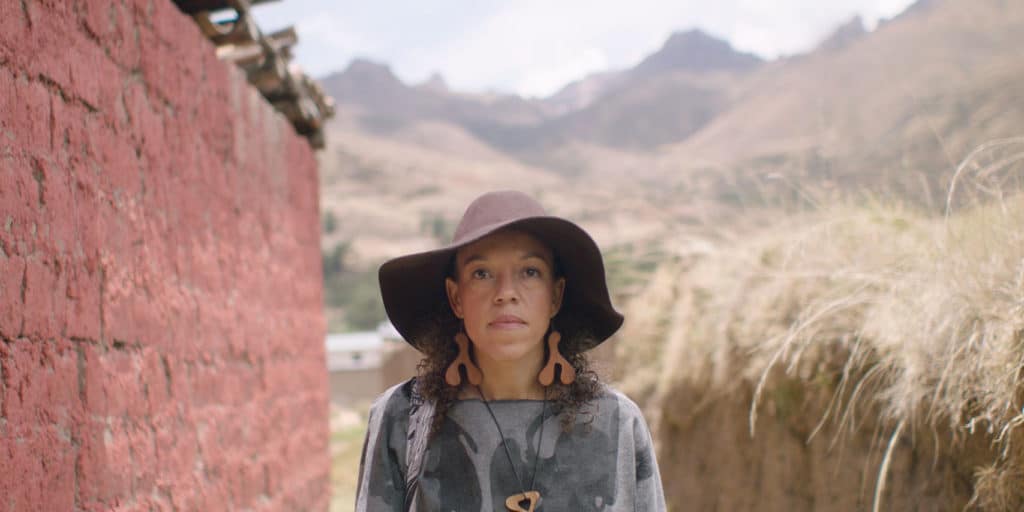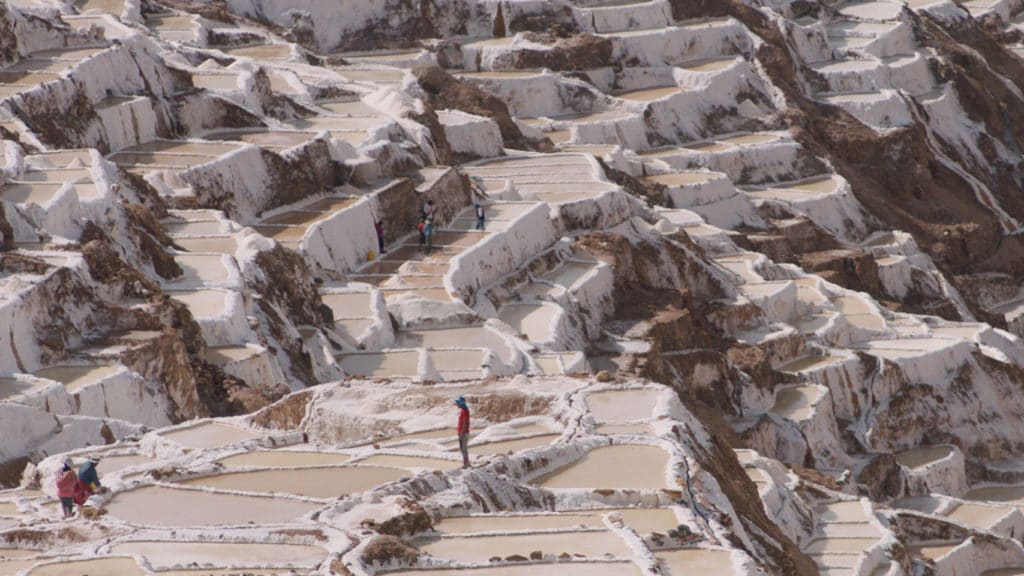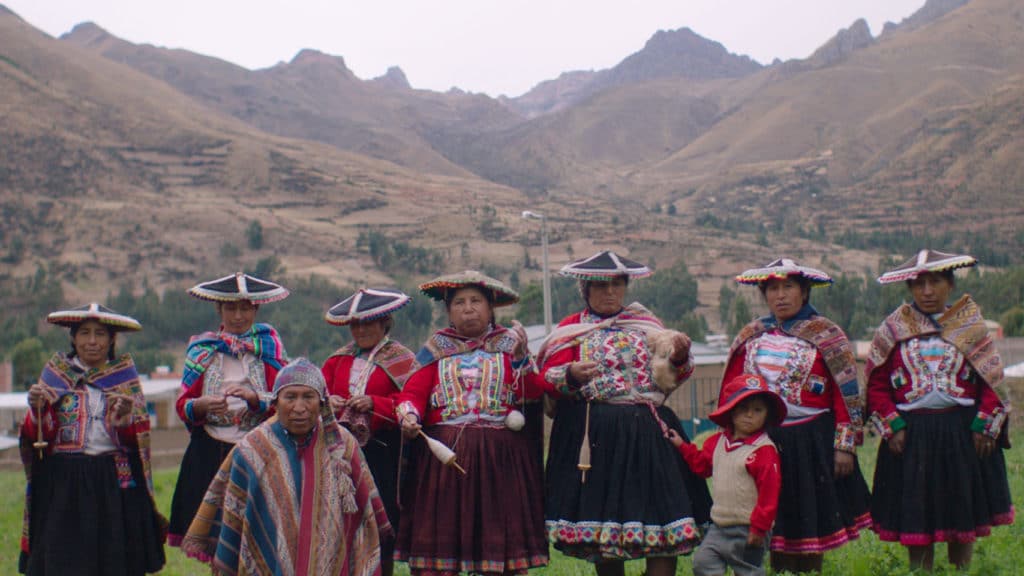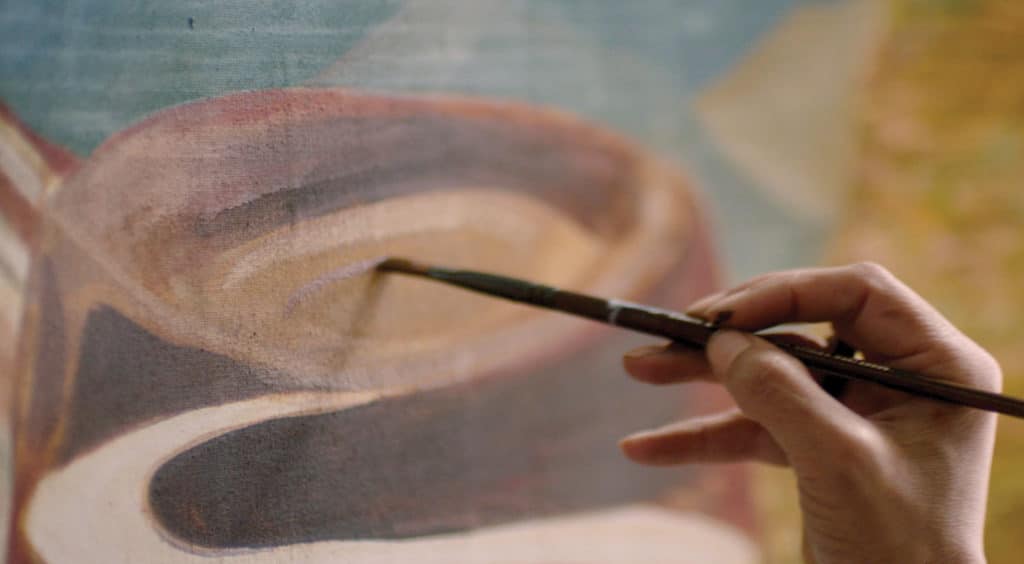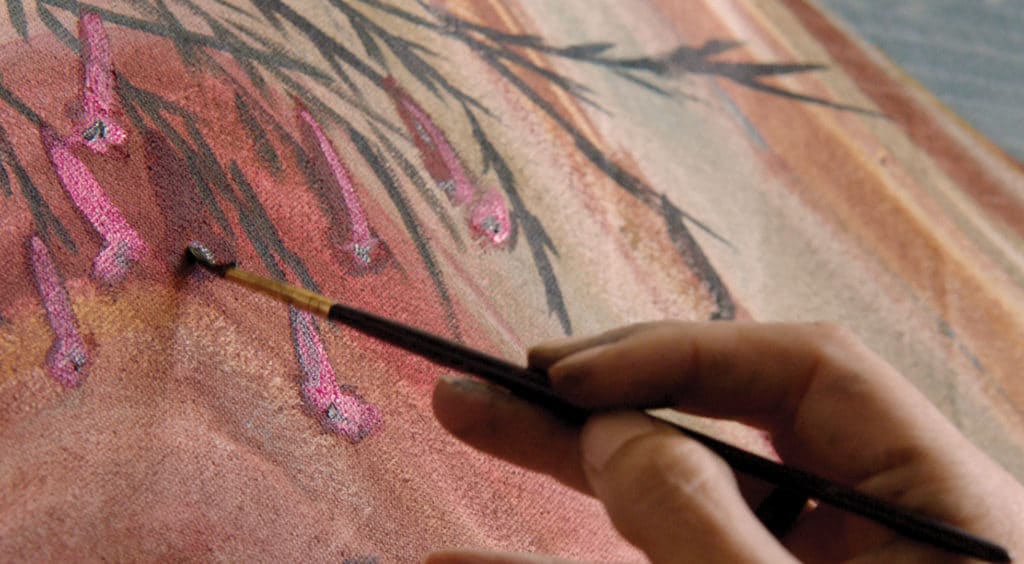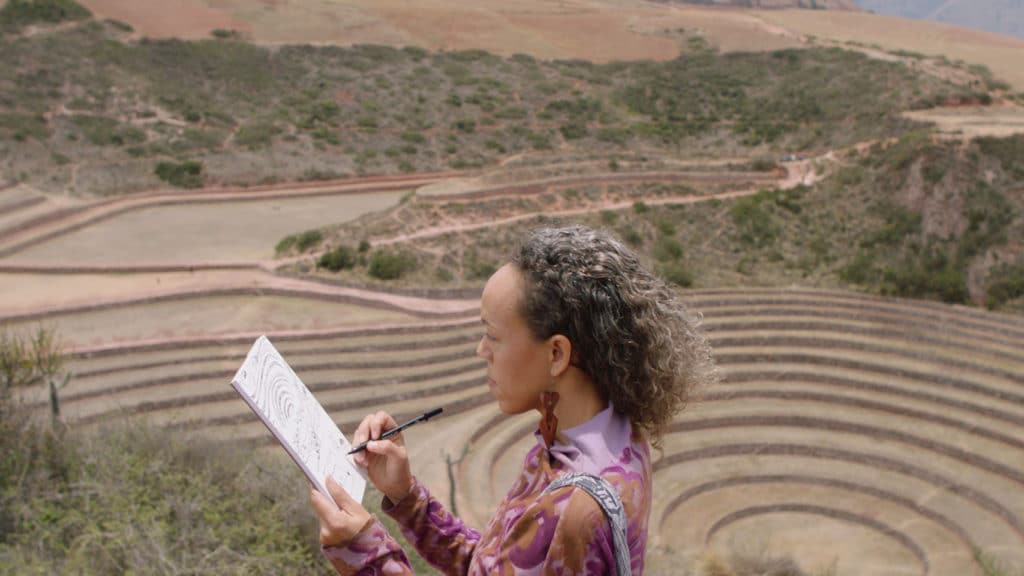At artist Paula Wilson’s studio in Carrizozo, New Mexico, freight trains rattle past the floor-to-ceiling garage door, which stands open to gusts of wind, passing tumbleweeds and views of the wide, blue sky.
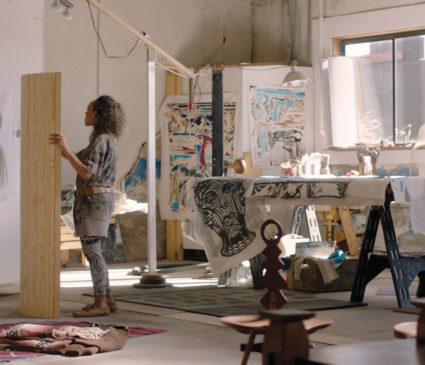
A Carrizozo transplant who grew up in Chicago and most recently lived in Bushwick, Brooklyn, Wilson came to the tiny, 900-resident central New Mexico town nine years ago.
Wilson’s studio is massive and airy (it’s housed in an old Ford garage), and throughout the space, finished artworks co-mingle with works in progress. On one white wall, an assemblage of bright abstract images is hung above a painting of mountains, female forms and larger-than-life water jugs.
Wilson’s work spans painting, print, performance and video, but almost all of it is colorful, vivid, busy and intensely detailed.
Wilson describes herself as biracial and her work as multicultural in influence, reflecting the landscapes she traverses and the people she meets on her worldwide travels.
Most recently Wilson traveled with Marriott to Peru as part of the StoryBooked documentary series, where she spent time in the high-altitude city of Cuzco and the nearby Sacred Valley, ringed with Andes peaks.
The impulse to visit Peru sprang from an interest in the country’s weaving tradition.
Wilson sews and prints many of her own clothes and is interested in clothing as wearable art. By donning their work, indigenous weavers bring art out of the gallery or museum and into everyday life. Wilson describes the ancient weaving practices as a thread of continuity between ancient and contemporary life.
“The thread of continuity is visible in the vibrant flow, colors and flare of everyday Quechua dress,” Wilson says.
But even more broadly, travel is central to both Wilson’s work and her lifestyle. Accordingly, she spends about two-thirds of the year on the road.
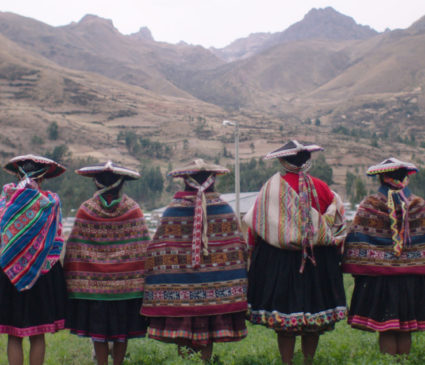
“Travel expands your worldview and your horizons,” Wilson says. She’s dressed in a gray tunic and patterned black-and-white leggings, which are not unlike the prints hung around her studio. When she smiles, it illuminates her whole face.
“The actual experience of being in a place brings me so acutely into the present moment that my senses open and there’s a receptivity that’s very powerful,” Wilson continues. “When you return home from travel, you see everything — yourself, your process, your world — anew.”
Wilson’s first big trip was in the early ’90s when she was 18 and went to Nigeria to teach English. “I can still remember getting off the plane in Lagos, this bustling city,” she says. “The patterns on the clothing and people carrying huge bushels of goods on their heads — it imprints on you.”
Similarly, when she returned to Carrizozo from Peru, the patterns of textiles and dramatic landscapes loomed large in Wilson’s mind — she made a painting on canvas, which she glued to wooden slats so that the piece stands on its own and can be rolled up like a rug.
When you return home from travel, you see everything — yourself, your process, your world — anew.
PAULA WILSON
At its borders, the painting resembles a textile, with fringed edges. In the background, mountains tower over bridges and terraced steppes, and the painting is dominated by a tall, wide-brimmed hat with a deep blue sash, based on the oversized bowler hats worn by indigenous women weavers in Peru.
A path winds its way down the hat, blurring the distinction between the representative aspects of the painting and the imagined ones.
In the depression at the top of the hat are a series of concentric circles, which Wilson says are inspired by her visit to Moray, an ancient Incan agricultural site that features terraced circles and an irrigation system.
Iconography is important to Wilson because it lends her paintings an element of universality — viewers need not have an art education or a similar contextual background to understand the work. Wilson is dyslexic, and also appreciates the nonlinear, no-one-right-answer aspects of art-making: Her work need not be read in a specific way.
READING HER ART
Working at the intersection of iconography and universality
“I’d love to talk to somebody who’s Peruvian about this piece,” Wilson says. “I’d be curious to see what they read. Hats have a long history in Peru that’s tied to colonialism, and to [Peruvians’] ownership of their history. They’re utilitarian. They’re so tall. It feels like a reflection of the mountains and the sense of scale that exists there.”
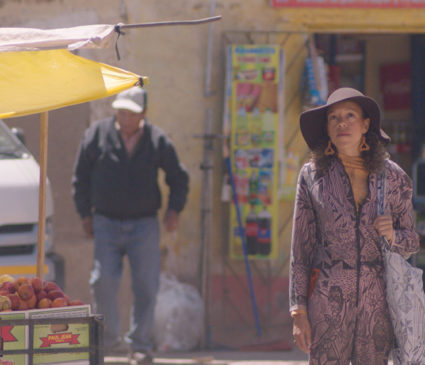
Wilson also visited nearby salt flats at Maras, where salty spring water from deep within the Andes evaporates in small pools to make culinary salt, a process that predates the Incas.
“From a distance the whiteness of the flats was so shocking — cut into the mountains, they are brighter and more faceted than any jewel,” Wilson says. “In this world of virtual reality and technology, it’s just so nice to be surprised by something in the flesh. Seeing them, I felt keenly aware of time — Jurassic time, ancient human history and my lifetime folded into one.”
Drawing inspiration from nature is a big reason Wilson lives in New Mexico, where mountains and canyons and surreal landscapes like White Sands (otherworldly gypsum sand dunes that undulate over 275 square miles) are close at hand.
She and her partner, Mike Lagg, who’s a woodworker, are often outside, exploring and hiking.
“Nature is the educator,” Wilson says. “When I got back to New Mexico from Peru, I was struck by how spread out it is here, how the landscape is similar to Peru, but unfolded, somehow, versus in Peru, with these tight valleys and the mountains right in front of you. There’s something about when you draw the landscape — this muscle memory that sets in, the horizon lines and the way the mountains get layered.”
In this world of virtual reality and technology, it’s just so nice to be surprised by something in the flesh.
PAULA WILSON
Living in Carrizozo affords Wilson and Lagg a lifestyle that might be untenable elsewhere, giving them the ability to make art full time and the space in which to do so.
About a year ago, the pair purchased the building that houses the studio and the buildings on either side — a crumbling hotel and the Lyric theater, complete with an old-fashioned ticket booth out front.
They call the complex MoMAZoZo. Every morning the pair walks the half mile from their house to the studio, accompanied by their scruffy black-and-grey cattle dog, Duchess.
Along with another local couple, Wilson and Lagg offer an artist’s residency called the Carrizozo Colony, where artists from around the world come to Carrizozo for a month-long stay. The idea is to inject diversity and new ideas into the tight-knit community.
When she’s at home, Wilson’s days are routine and the pace is slow, marked by trains passing through town and the arc of the sun in the sky. There’s lots of time to make art.
When wanderlust strikes again, Wilson longs to return to places she’s already been: back to Africa, which she hasn’t seen since she was a teenager, and back to Peru, to spend more time studying Andean weaving traditions.
“About this idea of what travel does to you,” Wilson says. “It can help you realize that life is a journey and it’s not about a destination. I remember that more when I get out of my element, and I felt it so profoundly in Peru.” She laughs. “It’s a windy road, and every turn is new.”
